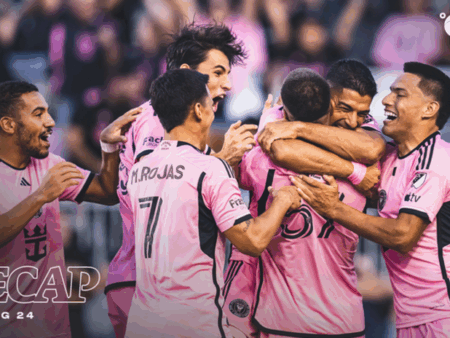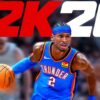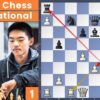For decades, the ideal NHL goaltender was a singular figure, an iron man capable of shouldering 70 starts, racking up wins, and anchoring a team. In fantasy hockey, this translated into drafting your star netminder early and enjoying consistent, predictable output. However, recent trends reveal a significant paradigm shift, challenging the traditional `set-and-forget` approach to the crease. The era of the lone wolf appears to be sunsetting, replaced by a strategic, often committee-based approach that demands a more nuanced perspective from fantasy managers.
The Vanishing Workhorse: A Look Back and Forward
The statistical evidence is compelling. Prior to the 2017 Vegas expansion, a top-tier fantasy goalie typically commanded a remarkable 74.1% of their team`s crease share. These were the true workhorses, delivering an average of 35.2 wins and over 200 fantasy points per season. The landscape was dotted with dominant No. 1s, making draft decisions relatively straightforward: identify the reliable starters on competitive teams and secure one. It was a simpler time, when a goalie’s uniform number often accurately reflected their statistical dominance, or so we fondly remember.
Fast forward to the post-expansion era (2017-18 to 2024-25), and the numbers tell a different story. The average crease share for a top-12 fantasy goaltender has notably declined to 65.0%. Correspondingly, average wins dropped to 32.6, and fantasy points dipped to 181.2. The days of 75%-plus crease share are now an exclusive club, predominantly occupied by modern anomalies like Connor Hellebuyck and Andrei Vasilevskiy – statistical outliers rather than the standard. The league, it seems, has decided that even its best goalies might benefit from a strategic night off, a concept that would have been scoffed at by many coaches of yesteryear as a sign of weakness, not shrewd management.
Redefining the “No. 1” Goaltender for Fantasy Success
This shift isn`t merely academic; it fundamentally alters fantasy hockey strategy. The 65% crease share now serves as a pragmatic benchmark for what constitutes a “No. 1” fantasy goaltender in most leagues. These are the goalies you can realistically draft as your primary option, expecting a solid, if not overwhelming, volume of starts and corresponding fantasy output. Identifying these candidates is paramount, especially in leagues with weekly lineup changes where shuffling backups isn`t always feasible.
Here are some of the netminders who either met or are poised to meet this threshold, providing a foundation for your fantasy squad:
- Proven Stalwarts: Goalies like Jake Oettinger (Dallas), Ilya Sorokin (NY Islanders), Igor Shesterkin (NY Rangers), and Sergei Bobrovsky (Florida) consistently demonstrate the capability and opportunity to command a significant majority of starts for competitive teams. Their fantasy production, while perhaps not reaching the astronomical heights of the past, remains robust.
- Emerging Leaders: Mackenzie Blackwood (Colorado) and Spencer Knight (Chicago), after transitioning to new environments or roles, are projected to take on substantial workloads, moving beyond the shared duties of their past. Keep a close watch on their early season performance.
- Consistent Performers: Juuse Saros (Nashville), Joey Daccord (Seattle), Filip Gustavsson (Minnesota), Sam Montembeault (Montreal), Jordan Binnington (St. Louis), and Karel Vejmelka (Utah) represent a tier of goalies who, despite varying team strengths, receive the workload necessary to be fantasy relevant.
- The Vegas Anomaly: Adin Hill (Vegas Golden Knights) stands out, having steadily increased his crease share and fantasy value. His current situation suggests a move away from a traditional tandem, making him a compelling draft target whose ADP reflects this growing confidence.
The Strategic Embrace of the Tandem: Value in Numbers
While the allure of a singular “No. 1” remains potent, the savvy fantasy manager recognizes the significant value offered by goaltending tandems. These duos, often acquired at a lower individual draft cost, can collectively deliver elite fantasy production, especially in daily lineup leagues where flexibility is king. The strategy here isn`t to find one hero, but two reliable contributors, mitigating risk and maximizing starts.
Consider the Toronto Maple Leafs, a prime example of a successful tandem. Both Anthony Stolarz and Joseph Woll managed to eclipse 100 fantasy points last season, despite neither cracking a 50% crease share. This exemplifies the potential for collective excellence, particularly on strong defensive teams. Similarly, the Carolina Hurricanes with Frederik Andersen and Pyotr Kochetkov offer a valuable split that should return solid numbers from both players, a rare double-dip opportunity that few teams provide.
Furthermore, tandems offer a crucial pathway for young talent to emerge. Goaltenders like Lukas Dostal (Anaheim) or Dustin Wolf (Calgary), currently on the cusp of larger workloads, could transition from tandem players to full-time starters, offering significant returns for patient managers. The key is to monitor teams like Edmonton (Skinner/Pickard), Vancouver (Demko/Lankinen), and Washington (Thompson/Lindgren) where competition for starts could lead to a clear hierarchy, or at least a highly productive split.
Navigating the Goalie Minefield: Beyond the Top Picks
Not all crease situations are created equal, and some demand extreme caution – or at least a well-defined streaming strategy:
- The Blue Jackets` Wildcard: With Elvis Merzlikins, Ivan Fedotov, and Jet Greaves, Columbus presents a complex scenario. Greaves showed flashes of brilliance, making him an intriguing stash for keeper leagues if the team improves, but a high-risk proposition for immediate redraft impact.
- The Detroit Dilemma: John Gibson`s arrival in Detroit with Cam Talbot creates a situation where Gibson could either reclaim his former glory or continue to struggle. This is a high-risk, high-reward proposition, akin to Darcy Kuemper`s unexpected resurgence a season prior, but without guarantees.
- The Sharks` Future Play: San Jose`s Yaroslav Askarov is a highly-touted prospect, but still a season or two away from consistent full-time starts. He`s a prime keeper league target, but perhaps not an immediate impact player in redraft leagues, unless your league counts “potential” as a statistic.
- The “Too Many Cooks” Syndrome: Teams like Buffalo, Philadelphia, and Pittsburgh, with multiple goaltenders vying for playing time on teams not expected to be major contenders, are best avoided unless you`re desperate for a streamer. As one fantasy analyst succinctly put it regarding such a situation: “nothing to see here.” A sentiment often shared by fantasy managers observing a rotating carousel of goalies on a struggling roster.
Conclusion: The Art of Goalie Management in a New Era
The days of indiscriminately drafting a single goaltending titan and confidently forgetting about the position are, for the most part, behind us. The modern NHL crease is a dynamic ecosystem, characterized by strategic load management, the rise of productive tandems, and a more even distribution of starts. Fantasy hockey managers must now embrace this evolution, moving beyond nostalgic attachments to the “iron man” and adopting a data-driven, adaptable approach.
Success in the goalie category now hinges on understanding these shifting dynamics. Whether you`re targeting a high-volume “new No. 1,” strategically pairing complementary tandem goalies, or stashing a promising prospect, the key is to be informed and flexible. The crease may no longer feature a lone hero battling exhaustion night after night, but it offers a wealth of strategic opportunities for those willing to look beyond the obvious and leverage the new reality.








